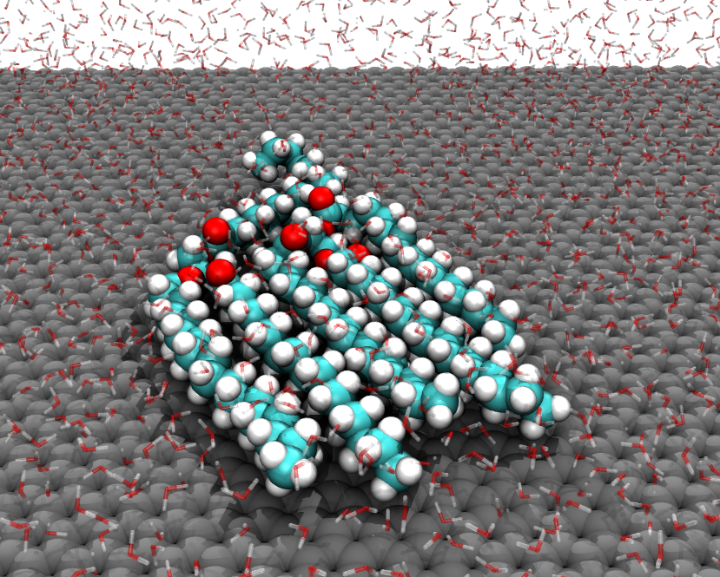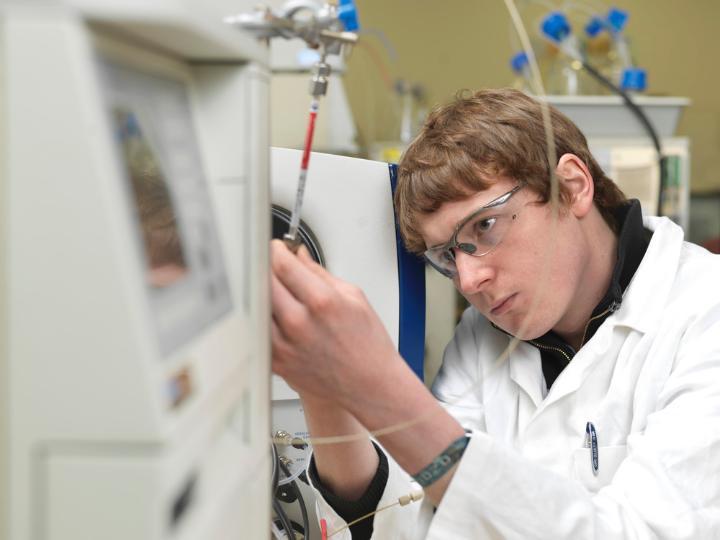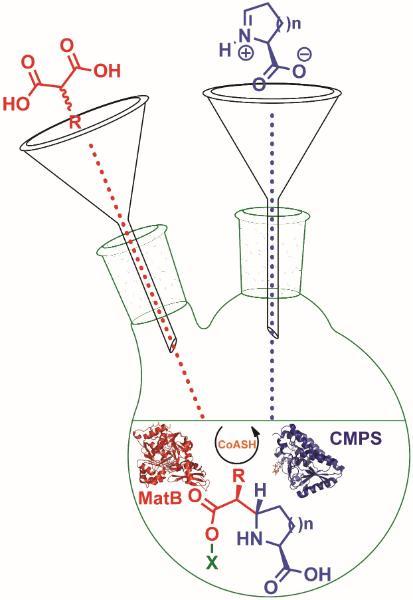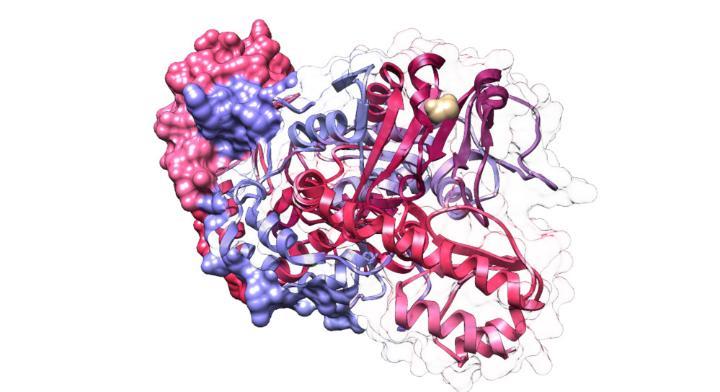
Dr William Martin
Associate Professor in Chemistry
The School of Chemistry and Bioscience has a large range of experience in the fields of Chemical and Structural Biology. The researchers’ interests range from synthetic inorganic and organic chemistry to biomaterials, biological synthesis and biophysical applications, particularly their importance as therapeutic agents in neurodegenerative diseases. The research being conducted lies in either synthetic experimental chemistry or computational analysis, and our advanced techniques are giving new insight into biophysical pathways and reactions that inform our chemical understanding of the natural world.

Molecular dynamics simulations of triacylglycerol lipid molecules adsorbed at the aqueous graphene interface.
The organic chemistry team uses a wide range of synthetic methods for organic synthesis, as well as developing in-house novel reaction methodology using mass spectrometry. The compounds of interest have applications not just in medicinal chemistry, but also in providing synthetic support for archaeological projects. We have the expertise of tackling complex asymmetric multi-step target synthesis, and modern analytical equipment to support our endeavours.
Within this area we also have expertise in solid-phase peptide synthesis using natural and non-natural amino acids. In collaboration with experimentalists, and supported by computational studies, we are designing peptides to be more effective agonists or antagonists in the endocrine and nervous system. Peptides are also synthesised containing post-translational modifications in order to study aging and disease mechanisms.
Another key area of research in the organic section is the development of synthetic supramolecular systems capable of demonstrating responsive behaviour. A wide range of synthetic organic motifs are employed to create complex systems that are able to exhibit dynamic behaviour in order to carry out biomimetic functions, for example the development of a new generation of antibiotics.

An exciting theme within this section sits at the interface of chemistry, biology and physics, and uses both experimental and computational biophysical approaches to study the mechanical properties of tissues and cells and develop our understanding of the molecular basis of disease.
Enzyme catalysis within the context of natural products biosynthesis is an area of interest to our team of scientists. The redesign or de novo design of biomolecules is a key element of this research. From a synthetic biology perspective, it is important to thoroughly understand the synthesis of complex natural molecules from simpler and smaller units. This is in turn essential for the production of compounds of therapeutic or economic interest, which is another area of interest to our team, too

Tandem catalysis for steroselective synthesis of substituted heterocycles.
Computational methods are used to study a range of biomolecules and to design and develop new small molecules and peptide drugs. Current research projects within the School are using computational approaches towards understanding amyloid diseases (e.g. Alzheimer's disease), disease-related post-translational modifications, anti-microbial drug development and the tuning of agonist and antagonist properties (please visit the webpage of Dr Clare-Louise Towse for more information). Specialist analytical techniques, such as Atomic Force Microscopy (AFM), are also being used to examine nano-structures and investigate the structure of skin and cancer cells as well as determining properties of drug crystals.

Multi-domain protein model to examine the surface packing and atomic-level interactions between the domains and in the active site.
We welcome enquiries from talented and committed scientists at all levels. Be that postgaduate (PG) level students interested in either taught MSc programs or research based PhD projects, we are keen to recruit and work alongside the brightest upcoming chemists. At PG level, research projects are very important, and we are keen that students get involved with designing their projects. If you have a research question or project in mind, and would like to discuss it with one of our PIs' please don't hesitate to contact us.
Members of these groups have a strong history in hosting undergraduate students in short summer projects, giving them valuable research skills and experience during their studies. If you are interested in carrying out a short 6-10 week summer project, fully funded, there are many bursary schemes available (for example the Royal Society of Chemistry).
Contact our staff well in advance to discuss your project and for assistance with writing the funding application.